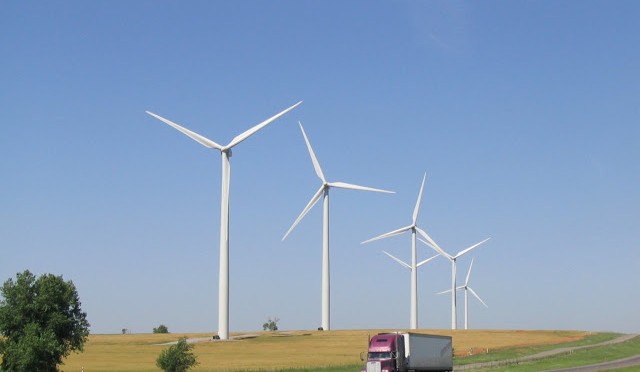The wind power industry faces uncertainty again as a key federal incentive for wind farms expired at midnight Tuesday, almost one year after getting a reprieve.
Unlike last year, there’s no “fiscal cliff” deal to get Congress to act at the last minute to renew the wind production tax credit. A budget package passed earlier this month didn’t include any provisions for the incentive.
Helping out in 2014 is a change in the tax code in how companies can treat the timing of a qualifying wind farm project. The extension means developers had to start construction by Dec. 31. That offers more flexibility than the previous requirement that a wind farm had to be producing electricity by the deadline.
In Oklahoma, more than 1,500 megawatts of wind farm projects were announced in 2013, said Kylah McNabb, renewable energy specialist with the Oklahoma Commerce Department. Many of the announcements came in the second half of the year as companies began filling orders again after uncertainty over the credit in late 2012.
“There was some thought that Oklahoma had reached a limit on how much wind it could use,” McNabb said. “But we’ve blown through that, with a substantial amount going to out-of-state utilities.”
Among the deals signed were projects for utilities in Arkansas, Texas and Nebraska. Here at home, American Electric Power-Public Service Company of Oklahoma said it would purchase 600 megawatts of capacity from three wind farms to be built in the state.
Oklahoma had 3,100 megawatts of wind capacity by the end of 2012, putting it in sixth place among the states. One megawatt can power about 250 homes.
McNabb said she’s fielded many questions from contractors, subcontractors and equipment suppliers in the past few months as many of the announced projects got close to beginning construction.
To qualify for the credit by the deadline, Internal Revenue Service rules require developers to have started “physical work of a significant nature” by Tuesday. Wind developers could either meet certain construction milestones or spend at least 5 percent of the total project cost by the deadline. Qualifying wind farms still need to be generating electricity by 2016.
The rules say construction must be related to the actual project. Developers could not build an access road for construction and expect that the project would qualify by the deadline. But if that road is integral to the operation of the wind farm, then it likely would qualify.
McNabb said the drawn-out construction milestones were better for developers and gave more time to utilities that require long-term planning to balance future electricity supply and demand.
Still, with this week’s expiration of the production tax credit, the wind industry again faces uncertainty. Congress could renew the incentive in 2014 and make it retroactive to the beginning of the year. Meanwhile, some taxpayer watchdog groups have launched campaigns against the credit, arguing that the wind industry is strong enough without it.
U.S. Sen. Tom Coburn, R-Okla., was among 10 senators ? nine Republicans and one Democrat ? signing a letter Dec. 17 asking a Senate committee working on tax reform to end the wind production tax credit.
“Our nation’s energy policy must make economic sense for taxpayers and not manipulate markets,” the letter said. “Continuation of the wind PTC (production tax credit) not only picks winners and losers, it is distorting our energy markets and it’s past time to end a temporary tax credit that was put into law in 1992.”
The incentive gives wind producers a 2.3-cent federal tax credit for each kilowatt-hour generated and can be used for up to 10 years. The American Wind Energy Association said the credit spurred $25 billion in private investment in 2012 and has supported more than 80,000 jobs across the country.
The wind tax credit is expected to cost $7.7 billion from 2013 to 2017, according to February estimates by Congress’ Joint Committee on Taxation. A separate estimate from the Congressional Research Service put the cost of the credit at $9.7 billion from 2013 to 2017.


